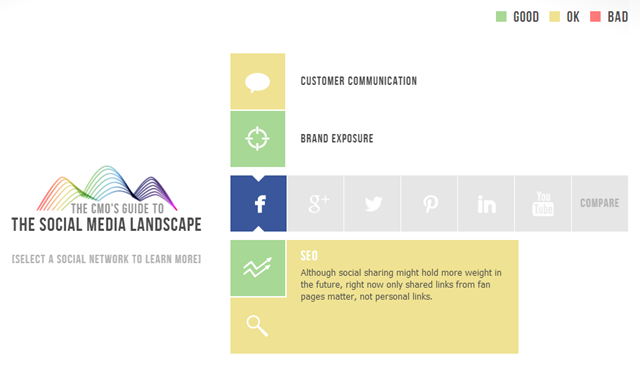When I look at infographics, I am looking not just at the facts and figures (boring) – I am looking a the underlying story. I want to understand what is taking place behind the numbers. I seek insight and connection between the sources of information, the behaviours of the industry and opportunities for the future.
So this infographic from Invesp, fired up my neurones.
Summarising the state of play for the digital advertising industry globally, it shows just how dominant Google remains in the face of challenges from social networks. A staggering 42.6% of ad spending finds its way into the search giant’s coffers, while Facebook, Yahoo! and Microsoft duke it out for less than half of that combined.
From an industry point of view, growth in digital advertising indicates a certain level of health. It shows that digital has firmly moved out of the experimental mode and is now a core part of a marketer’s arsenal. But it also raises significant questions – after all, if spending is increasing, are we also seeing a rise in investment? And by investment I mean:
- Evaluating and implementing marketing platforms and technologies: Pumping more budget into digital is going to also shift the focus towards digital engagement. After all, a digital call to action can result in a click, a download, a sale and so on … and if that is the case, what investments are marketers making in terms of marketing platforms and systems of engagement? Which platforms are you evaluating for marketing automation or social media management? How are you tracking conversion, monitoring the velocity of online conversation and improving rates of conversion? CMOs should evaluate their marketing processes and look for automation opportunities.
- Building the capacity and experience of your teams: The digital marketing skills gap continues to widen. For decades, marketers have been forced to do more with less – and now as the demand for digital skills accelerates, many CMOs find themselves responsible for teams who have transitioned from into “digital” from more “traditional” marketing fields. This has resulted in teams with limited or poor digital experience, basic skills and little time to build capacity. CMOs should carry out a Digital Skills Audit as a matter of priority.
- Investing in customer engagement strategy: Much of our marketing strategy is built around maximising the value of channels. It’s time to stop this nonsense. We need to map customer journeys and then invest in engagement that adds value to the customer experience at key “moments of truth”. This means stepping away from the channel. Even if that channel is “digital first”.
Have your say
What have I missed? What have I mis-read? What else needs to be improved?




